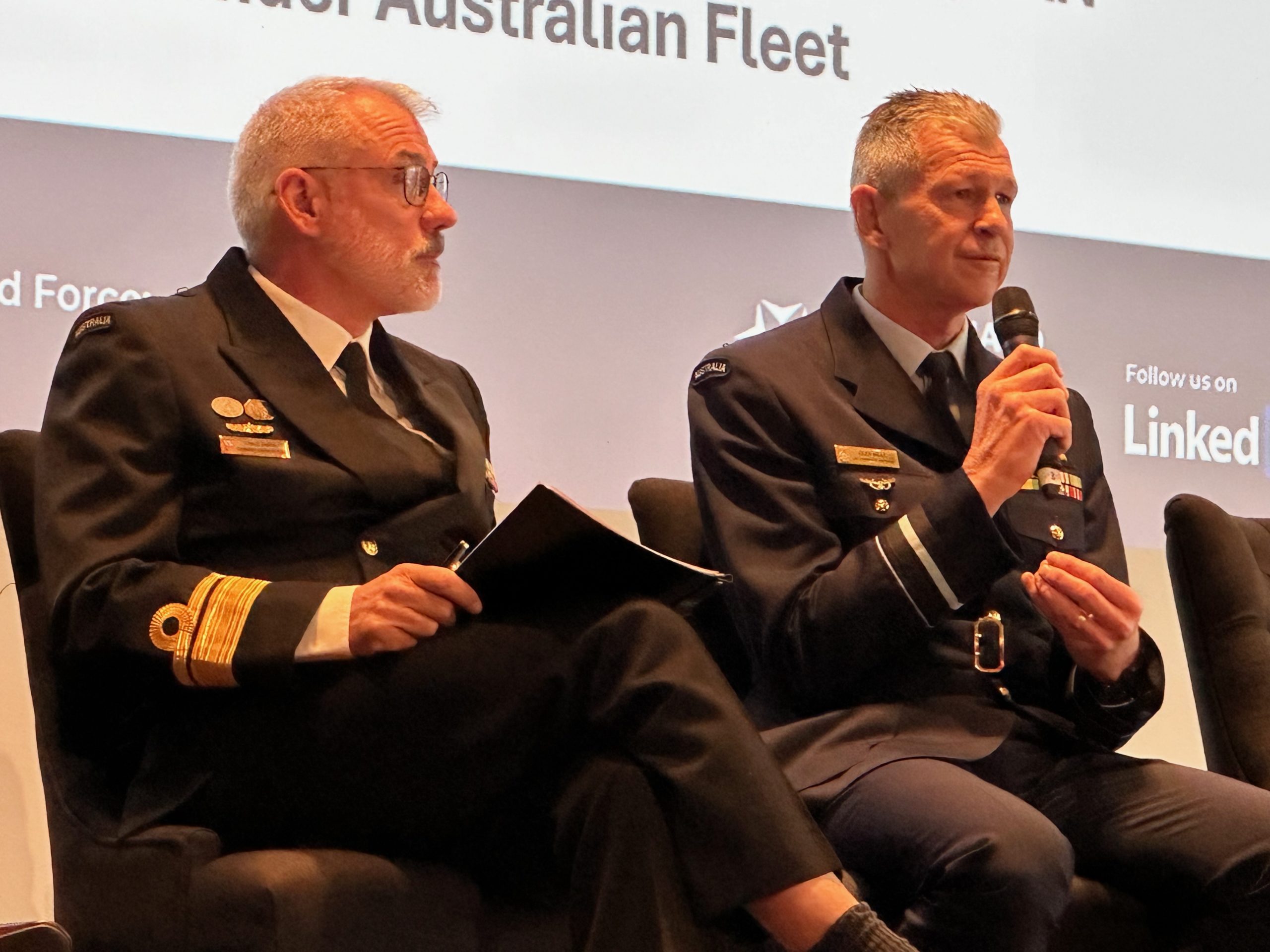Shaping a Way Ahead for Airpower in a Contested Region: The Perspective of Air Vice Marshal Glen Braz
Air Vice Marshal Braz participated in the latest Sir Richard Williams Foundation seminar on September 26, 2024. His presentation and engagement were as part of a panel with Rear Admiral Christopher Smith, Commander Australian Fleet which focused on how to generate mass for the ready force.
I had chance to meet with him and to enhance the discussion in a meeting in his office.
I had the privilege of interviewing him when he was at Amberley Airbase commanding the Wing which hosted the new Growler squadron.
And then again when he presented at the August 23, 2017 Williams Foundation seminar on the future of electronic warfare.
Obviously, his experience with electronic warfare put him at the heart of evolving combat realities, namely the core significance of prevailing in the electro-magnetic spectrum.
During the discussion in his office, we went over the major elements of his presentation but discussed in more detail his point regarding the need to have a sense of urgency. It is crucial from a ready force perspective to drive change in how one organizationally shapes the force.
This is how he put it:
We need to enhance a sense of urgency in shaping the ready force.
We’ve been very habitualized in managing long lead, large programs with long gestation and comprehensive oversight. We have done so through a slow approval process with rigorous analysis which deliver exquisite systems which allow us to shape a framework around which we can operate and with which we can operate,
But such an approach is lacking in terms of providing rapidly what the near-term enhanced force in being sees as immediate needs.
Such a system doesn’t naturally deliver the enhancements that I would seek for the ready force in a timely manner. We need to adjust our focus on defense preparedness to encompass organizational change that can quickly deliver near-term solutions identified by our forces in being.
It was clear that as Air Commander Australia, Air Vice Marshal Braz has to be prepared for the ready force to support the missions directed by the Joint force commander. And one might put it that adaptation of the force under duress is a key driver of change, and the challenge is organizationally how to build in the capacity to drive force design from such a perspective rather than doing so primarily from the standpoint of the core platforms to be acquired in the future,
And this approach underscores the importance of trusting the operational force to identify gaps to be met.
Air Vice Marshal Braz put it this way:
We talk increasingly about the workforce having a warfighter mindset. The ability and willingness for people to adapt is going to be fundamental to our war fighting effectiveness. I need every human that we have contributing to the effort, and I need them to be contributing in ways that they haven’t even figured out apply to them yet.
There’s a trust equation inherent in mission rehearsal. In mission rehearsals, we find gaps, and we look for rapid ways, perhaps imperfect, to remedy the gaps.
And then we try to give technology that we think will solve known problems to our workforce, and we let them have the license to integrate it and operate with it in ways that we probably never imagined that they would.
But with their creativity and their adaptability they find ways to do so.
By then adopting the solutions they find into the ready force, we are incentivizing them to work in an innovative way that makes the ready force better in the near term.
I pointed out that when he was working in EW, it is an area which succeeds only by staying ahead of the game. In EW or more generally in Tron Warfare, it is crucial to ensure that the force has transient software advantage.
In this graphic developed several years ago and presented to me during a visit to Australia, this challenge was visually imagined this way:

Air Vice Marshal Braz further emphasized:
One needs to be able to rebuild the force quickly, and that applies across the whole system of capabilities. We need to adapt quickly.
And another element that I’m really interested in is our ability to generate tempo despite potentially disaggregating the force for survivability and for maneuver within that disaggregation.
But I need to be able to catch the adversary off guard and to punch multiple times in diverse ways and axis of maneuver.
We need to be able to maximize our force and do things that will disrupt the enemy’s thinking, and do the unexpected, which is going to be important for us a small force.
We need to be a smart force to which can provide technological advantage in the sense of being able to have ongoing and transient advantage.
Braz highlighted that collaboration among the Australian, American and British Air Warfare Centers provided an important way for the RAAF to explore concrete ways to get better value out of the ready force, and to cross-learn ways to gain combat advantages through enhanced training and identifying combat gaps that need to be and can be filled by technological or other fixes.
He argued: We can find ways to seek asymmetry and apply new technology quickly. I thank such a capability is a key contributor to the deterrence equation.

